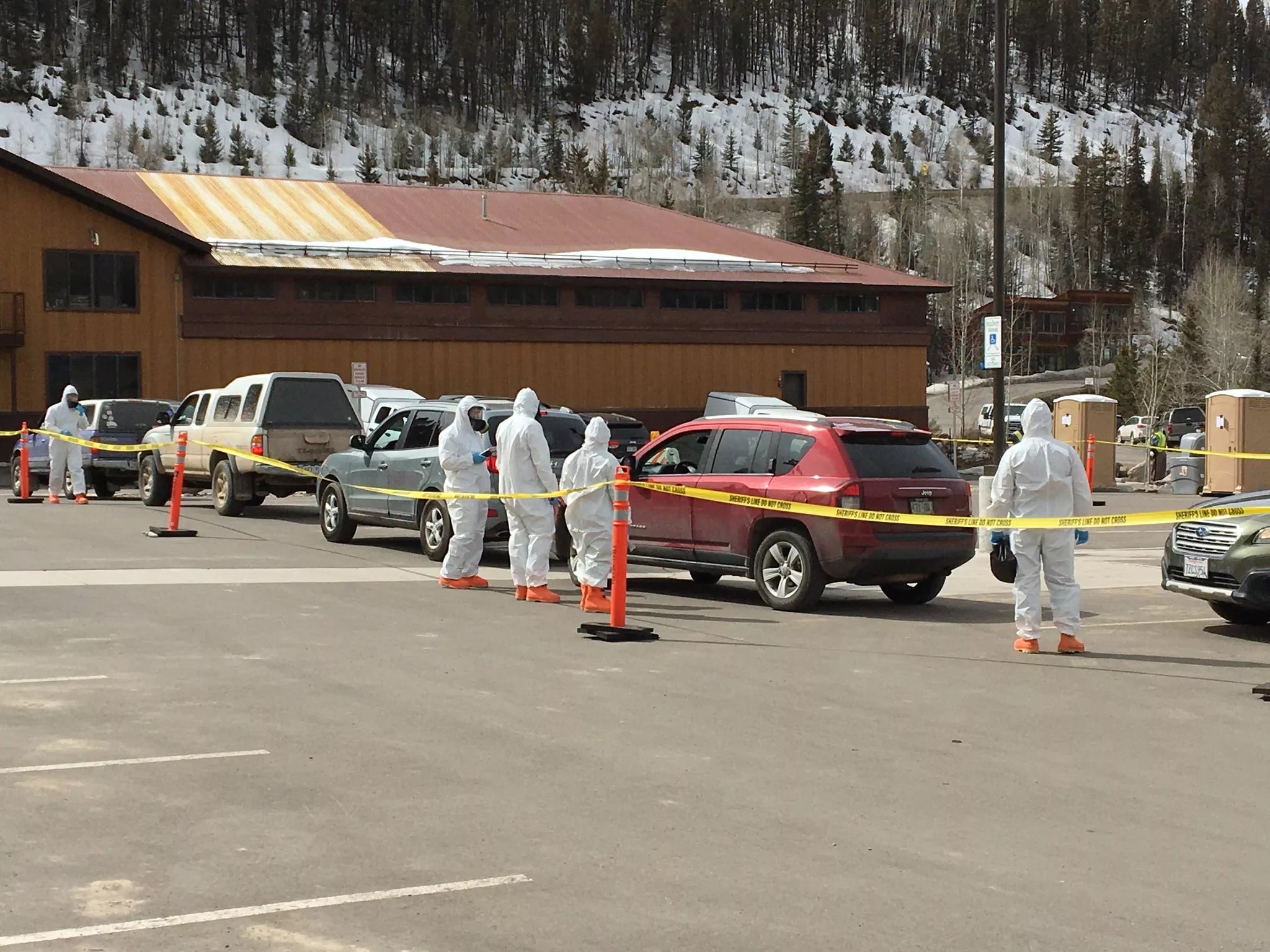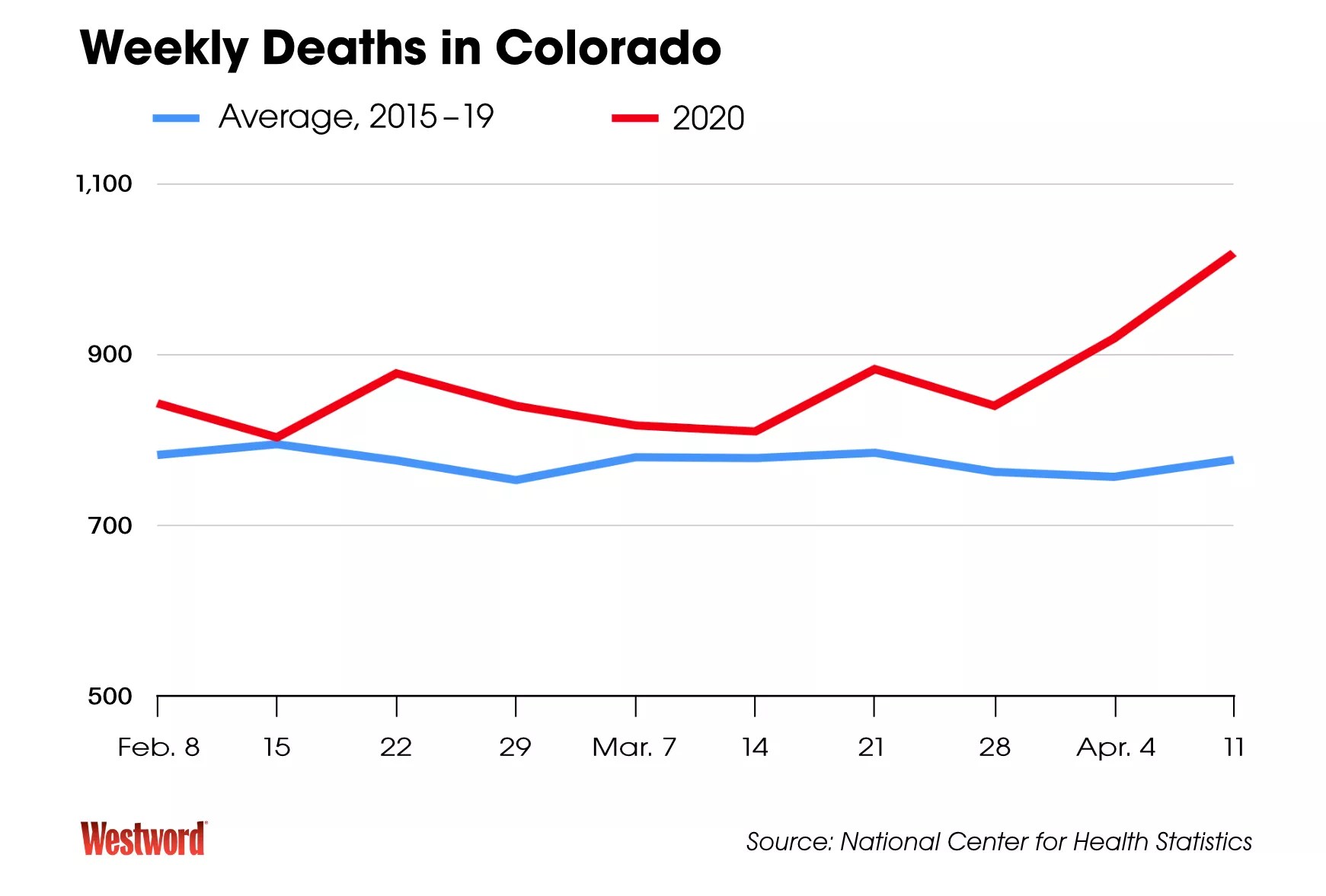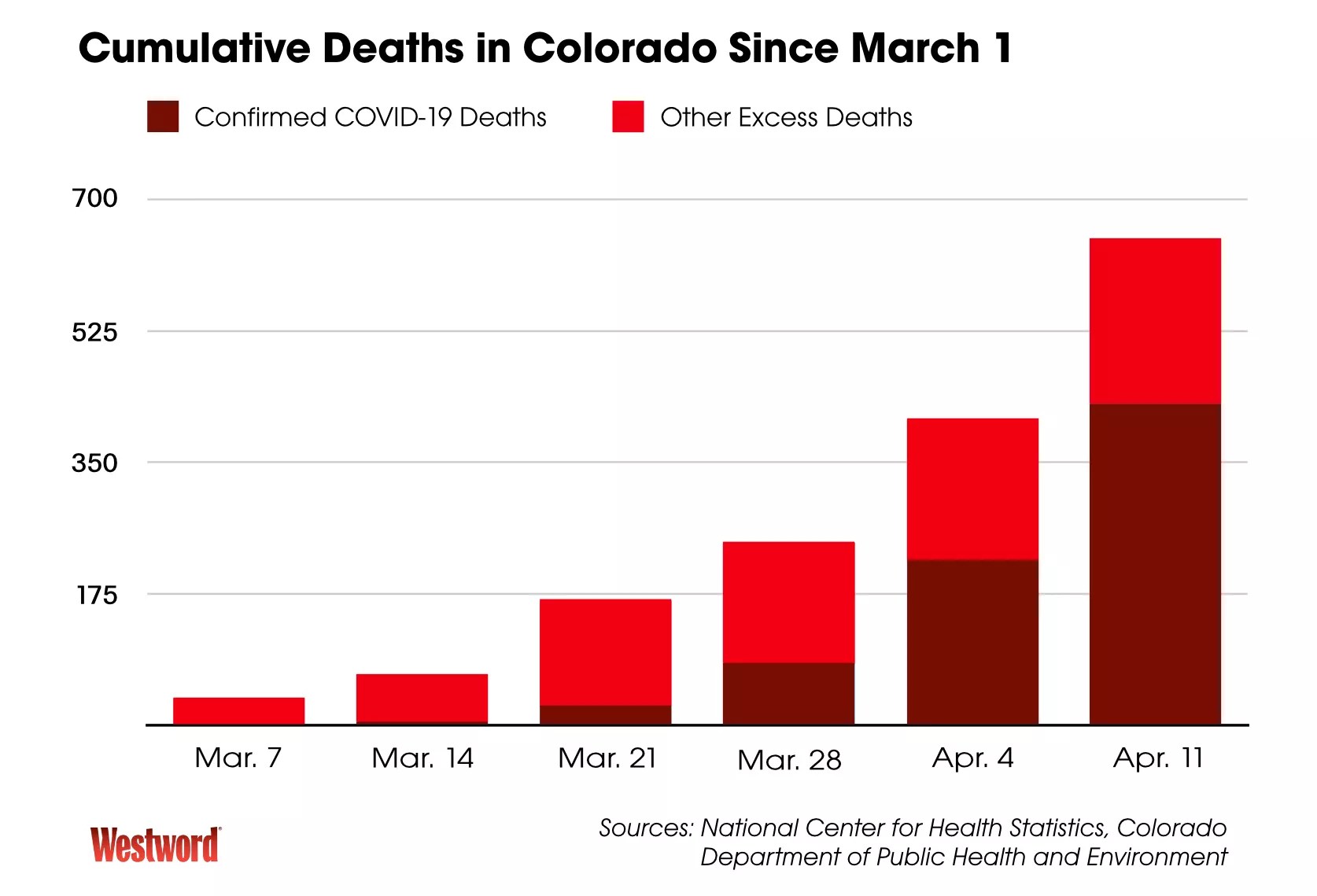
U.S. National Guard

Audio By Carbonatix
New mortality data released this week by the Centers for Disease Control and Prevention suggests that the number of Americans who have died from COVID-19 is significantly higher than the confirmed totals reported by public health officials, and Colorado is no exception.
Updated state-level death counts released April 28 by the CDC’s National Center for Health Statistics show that Colorado has reported weekly numbers of deaths far in excess of previous years as the coronavirus pandemic has worsened. When compared to the last five years on average, the state reported about 650 “excess” deaths between March 1 and April 11 – that is, 650 more deaths than would be expected during that period – and about 905 excess deaths between February 1 and April 11.
While the NCHS figures include deaths from all causes, not just COVID-19, the size of the spike suggests that the virus’s true death toll may be higher than previously reported. As of today, April 29, the state’s official date-of-death data shows 429 confirmed deaths from COVID-19 on or before April 11.

Westword
Will you step up to support Westword this year?
At Westword, we’re small and scrappy — and we make the most of every dollar from our supporters. Right now, we’re $20,500 away from reaching our December 31 goal of $50,000. If you’ve ever learned something new, stayed informed, or felt more connected because of Westword, now’s the time to give back.
Colorado reported its first two confirmed cases of COVID-19 on March 5, and the state’s first confirmed COVID-19 death occurred on March 9, according to data from the Colorado Department of Public Health and Environment. But subsequent modeling has shown that the virus was present in Colorado as early as mid-January, health officials said earlier this month.
Officials estimate that the actual number of Coloradans who have contracted the virus is as much as seven times higher than their confirmed case count, which currently stands at 14,316. The official death toll has undergone occasional fluctuations owing to lagging and inconsistent data, including the addition of roughly 130 deaths last week as the state added older and “probable” deaths to the count. But the new NCHS data raises the possibility that the state has experienced hundreds of additional COVID-related deaths that haven’t yet been positively identified as such.
CDPHE officials say that they are monitoring these potential excess deaths, and expect the official COVID-19 death count for “earlier periods” to continue to rise as more death certificates are processed.
“We are left to conclude that COVID-19 is having a significant impact on mortality in Colorado, both through deaths directly attributable to COVID-19 and potentially other causes exacerbated by the present situation,” says a spokeswoman for the state’s Emergency Operations Center. “The exact degree to which COVID-19 deaths may be under-ascertained is something we don’t know right now.”

Westword
A number of factors could partially account for this gap, from population growth to a deadlier-than-average influenza season – while others, including a likely decrease in traffic deaths, could be offsetting the increase. But Colorado’s surge is consistent with national data, which shows a soaring number of excess deaths as the coronavirus began to spread across the country in early March, and suggests a far higher toll than official COVID-19 death counts indicate. National excess deaths through April 4 were nearly double the 8,128 reported COVID-19 deaths through the same date, according to a Washington Post analysis.
The NCHS data highlights continued uncertainty about the spread of the novel coronavirus and the disease it causes in humans, both of which scientists are still struggling to fully understand. With reported deaths similarly rising far above normal levels in countries around the world, these excess-death figures dispel any notion that the virus’s impact is comparable to that of the seasonal flu, as some conservative skeptics have argued.
Because mortality data from the NCHS lags by several weeks, April 11 is the most recent date through which complete death counts are available. More than 1,000 Coloradans reportedly died between April 5 and April 11, making it the state’s deadliest week in the last six years – and, given population trends, perhaps in its history. State data and modeling from the Colorado School of Public Health indicate that week is roughly when the current wave of infections peaked, though experts warn that infections and deaths could spike again if social-distancing rates aren’t maintained in the coming weeks and months.
Update: This story was updated at 9:45 a.m. April 30 to include new information from the Colorado Department of Public Health.